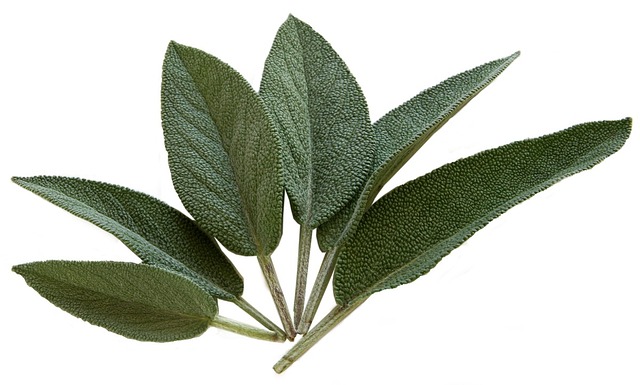Description
The name of the sage plant
This plant is known by the scientific name of Salvia Officinalis and has a hot and dry nature. In fact, its scientific name is derived from the English word salver, which means savior.

Description
This plant belongs to the mint family. Sage is so similar to rosemary that the two are considered sister plants. The many properties of sage are due to the presence of a chemical compound called rosmarinic acid. If we want to find a difference between rosemary and sage, we can say that its plant is evergreen and has blue or purple flowers.
Benefits of sage
The amazing properties and benefits of this plant are many. We are going to explain them below.
anti aging
Because this plant is rich in vitamin A and calcium, it can repair the skin daily. Therefore, the use of this medicinal plant can delay the appearance of wrinkles on the face and minimize its amount.
Toner for oily skin
Sage can act as an excellent skin toner by regulating oil production.
Fixing skin problems
Due to its antibacterial properties, this plant can prevent skin problems. In addition to these properties:
Disinfectant
Relieve acne inflammation and relieves the symptoms of eczema and psoriasis.
Solve hair loss problems
Sage is effective in the treatment of baldness in men due to its beta-sitosterol, and it is used in making hair masks.
Having smooth and shiny hair
Using sage means to have smooth and shiny. Hair masks that contain this plant can also be useful for treating dandruff.
hair growth
In fact, the combination of sage and rosemary is very effective in strengthening hair growth and thickening strands. If you use the hair mask containing them twice a week, it will strengthen your hair growth.
Darkening hair color
If your hair is a little gray, don’t worry at all because sage can be effective in changing the color of gray hair to dark and you can also have more shiny hair.
Anti-inflammatory properties
Sage has unique anti-inflammatory properties. This plant can also be used to treat inflammation of the throat and mouth.
Eliminate excessive sweating
The leaf solution of this plant can help reduce sweat by more than 50% and eliminate body odor.
indigestion problem
Sage can be effective in treating all kinds of indigestion related problems. This medicinal plant is actually a stimulant that compensates for the weakness of the digestive system.
sore throat
A solution containing sage can be effective in treating problems related to throat inflammations and ulcers.
Oral health
If sage is used in the material used for mouthwash, it will be effective in treating problems related to mouth and teeth.
relieve shortness of breath
Prevention of sudden asthma attacks is another therapeutic benefit of sage. In fact, this plant is also anticonvulsant and can reduce muscle tension.
Treatment of depression
If you drink a cup of sage tea daily, you can overcome negative emotions and thoughts. As a result, the symptoms of depression will also decrease.
heart health
This plant is also considered a vasorelaxant and can protect you from various cardiovascular diseases.
Eliminate cellulite
Using sage oil can be effective in increasing blood circulation, in fact, high blood circulation means more detoxification of the body. When toxins are eliminated, less cellulite will form.
Cough treatment
This plant has expectorant and anti-inflammatory properties and can be used to treat cough.
Relief of menopause symptoms
Sage infusion can be effective in relieving menopausal symptoms such as hot flashes.
peace of mind
If you consume the infusion of sage, you can be safe from anxiety and obsessive-compulsive disorder, and you will not need treatment and the use of chemical drugs.
Properties of sage for diabetes
Sage has long been known as one of the medicinal plants to control diabetes and blood sugar. The extract and special chemical compounds present in this plant have similar effect and performance to anti-diabetic drugs. Consumption of sage regulates and inhibits the release of glucose stored in the liver. The sage plant prevents fluctuations in blood sugar levels in the body and reduces the risk of type 2 diabetes, and this herbal medicine also helps to reduce the symptoms of type 2 diabetes. Drinking tea or extract of sage leaves can be helpful in reducing cholesterol and triglyceride levels in the blood, especially in people with type 2 diabetes. Another property of sage is that this plant improves insulin sensitivity and reduces inflammation in the body of people with diabetes.
Properties of sage for fatty liver
One of the properties of sage is to induce urination. Being a diuretic makes the toxins and waste materials of the body to be eliminated through urine and the body to be cleansed. Sage also cleans and protects the lymph nodes and kidneys in addition to the liver. Sage tea can also help detoxify the body through the skin by increasing sweating.
Another useful way to treat fatty liver is weight loss. Sage slimming tea also plays a role in slimming and weight loss, and in this way, it helps to treat the symptoms of fatty liver.
Disadvantages of sage
In general, the benefits of this medicinal plant are so great that some people think it has no harm.
But you should pay attention to the fact that sage contains thujone and camphor, so if you take it in excess, you will experience many side effects, including seizures and organ damage.
According to the studies that have been done, daily use of 3 to 6 cups of tea brewed from this plant will not cause any problems.
On the other hand, pregnant women should not overdo the consumption of sage, because the high amount of thujone in the body will cause uterine contractions.
Breastfeeding women should consult a doctor before consuming sage tea. They can use the 24-hour reception site to ask medical questions online to keep themselves and their baby healthy.
In diabetic people, this plant may cause mild problems such as skin rashes, digestive problems, high and low blood pressure and low blood sugar levels.
In addition, people with a history of hormonal problems should not include sage in their diet. Even a large amount of this herb can interfere with sedative, anticonvulsant, and antidiabetic medications.
How to use sage
There are many ways to use this plant. One of its popular methods is to use it as a decoction. To prepare this tea, you can brew 1 to 2 grams of fresh leaves of this plant in a glass of water and drink it after about 15 minutes.
Due to the aromatic nature of the leaves of this plant, some people use it while cooking, and its seasoning and spices are also used in the preparation of all kinds of food and drinks. Sage tea and oil are also very popular.

Sage comes in many forms and can be used in many ways. Fresh sage leaves have a strong aromatic flavor and are best used sparingly in foods.
Dried sage is often preferred by cooks and comes ground, rubbed or in whole leaves.
Here are some ways to use dried sage:
1- As a rub for meat.
2- As a seasoning for roasted vegetables.
3- Combined With mashed potatoes or pumpkin for a more earthy taste.
How to prepare sage tea
Necessary ingredients for making tea include one liter of water, one tablespoon of honey, one lemon and 15 grams of fresh or dry sage.









Reviews
There are no reviews yet.